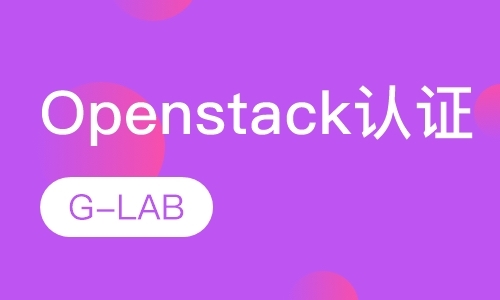
认证前提:无
适合人群:
希望从事大中型复杂网络的构建、优化和管理的人士;
有一定网络工作经验,希望全面提升网络技术能力、网络安全能力、故障排查能力的IT人士;
IP网络运维工程师、企业核心网工程师、有意成为IP网络专家的技术爱好者。
就业方向:
高级网络工程师、基础架构工程师、信息安全工程师、IDC高级网络管理工程师、网络总监、技术支持工程师、网络架构师、高级服务解决方案工程师。
课程介绍:
HCIE课程定位于大中型复杂网络的构建、优化和管理。该课程内容包括但不限于:不同网络和各种路由器交换机之间的互联,复杂连接问题的解决,使用技术解决方案提高带宽、缩短相应时间、大限度地提高性能、加强安全性和支持全球应用,复杂网络的故障排除。
课程大纲:
2.1 Layer 2 Technologies
2.1.1 STP
1.STP
2.RSTP
3.MSTP
4.Loop guard
5.Root guard
6.BPDU guard
7.TC-BPDU attack guard
2.1.2 VLAN and GVRP
1.Access port
2.Trunk port
3.Hybrid port
4.QinQ
5.Vlan Aggregation
6.Mux Vlan
7.Voice vlan
8.GARP
9.GVRP
2.1.3 Transparent bridge
1.Local Bridging
2.Remote Bridging
3.Integrated Bridging and Routing
4.VLAN ID Transparent Transmission
2.1.4 Link Aggregation, Eth-Trunk and IP-Trunk, Load-balance, LACP
1.Link Aggregation
2.LACP
2.1.5 Ethernet technologies
1.Speed and duplex
2.Ethernet, Fast Ethernet, and Gigabit Ethernet
3.Auto MDI/MDIX
4.Auto negotiation
5.Storm control
6.Unicast flooding control
2.1.6 SEP
1.SEP
2.SEP Multi-Instance
3.SEP Topology Change
4.SEP Troubleshoot
2.1.7 HVRP
2.1.8 RRPP
2.1.9 Smart link
2.1.10 DLDP
2.1.11 Switched Port Analyzer (port-mirroring)
2.1.12 Frame Relay
1.LMI
2.Traffic shaping
3.Full mesh
4.Hub and spoke
5.DE
2.1.13 HDLC and PPP
2.1.14 PPPoE and PPPoA
2.2 IPv4
2.2.1 IPv4 addressing, subnetting, and VLSM
2.2.2 IPv4 tunneling and GRE
2.2.3 IPv4 RIP version 1/2
2.2.4 IPv4 OSPF
1.Standard OSPF areas
2.Stub area
3.Totally stubby area
4.NSSA
5.Totally NSSA
6.LSA types
7.Adjacency on a point-to-point and on a multi-access network
8.Virtual-Link
9.LSA Filter
10.OSPF graceful restart
11.Stub Router
12.OSPF Authentication
2.2.5 IPv4 IS-IS
1.NSAP
2.IS-IS Link-state packets
3.IS-IS area type
4.IS-IS circuit type
5.IS-IS TLV
6.IS-IS DIS and Pseudo node
7.IS-IS SPF
8.IS-IS LSP
9.IS-IS Metric
10.IS-IS Route Leaking
11.IS-IS RPC
12.IS-IS Graceful Restart
13.IS-IS LDP Synchronization
14.IS-IS Authentication
2.2.6 IPv4 BGP
1.IBGP and EBGP
2.BGP attributes
3.BGP synchronization
4.BGP routes Summarization
5.Route Dampening
6.BGP route reflector
7.BGP confederation
8.BGP Community
9.BGP Peer Groups
10.BGP Graceful Restart
11.BGP Security
12.Principles of Route Selection
2.2.7 Route Control
1.Filtering
2.IP Prefix list
3.Route Import(redistribution)
4.Route policy
5.Summarization
6.Preference
7.Other advanced features
2.3 IPv6
2.3.1 IP version 6 addressing and different addressing types
2.3.2 IPv6 neighbor discovery
2.3.3 IPv6 functionality protocols
2.3.4 Tunneling techniques
2.3.5 RIPng
2.3.6 OSPF version 3
2.3.7 MP BGP
2.3.8 Route Control
2.4 MPLS VPN
2.4.1 MPLS
1.MPLS network component (P, PE, CE)
2.MPLS label format
3.MPLS label encapsulation
4.MPLS label stack
5.MPLS label operation
6.Forwarding Equivalence Class
7.LDP
8.Label advisement model
9.MPLS LDP—Local Label Allocation Filtering
10.MPLS LDP Inbound/outbound Label Binding Filtering
2.4.2 MPLS Layer 3 VPN
1.MP-IBGP VPNv4 peering
2.VPN-instance
3.Route Distinguisher
4.Route Target
5.Route Target import/export
6.PE-CE–Dynamic Routes
7.PE-CE–Static Routes
8.Redistributing PE-CE routes into VPNv4
9.Redistributing VPN4 routes into PE-CE routing table
10.MPLS VPN Multicast
11.MCE
2.5 IP Multicast
2.5.1 Multicast distribution tree
2.5.2 Multicast forwarding
2.5.3 Multicast RPF
2.5.4 Multicast Administrative Boundaries
2.5.5 PIM dense mode
2.5.6 PIM sparse mode
2.5.7 IGMP
2.5.8 IGMP Snooping
2.5.9 MSDP
2.5.10 Inter domain multicast routing
2.5.11 PIM RP, and BSR
2.5.12 Multicast tools, features, and source-specific multicast
2.6 Network Security
2.6.1 Access lists
2.6.2 uRPF
2.6.3 IP Source Guard
2.6.4 AAA
2.6.5 802.1x / NAC
2.6.6 NAT
1.Static NAT/NAPT
2.Dynamic NAT/PAT
3.Easy IP
4.NAT Server
5.Twice NAT
6.ALG
7.NAT Mapping
8.NAT Filtering
2.6.7 Device access control
2.6.8 Security features
2.6.9 Traffic Suppression
2.6.10 Local Attack Defense
2.6.11 IP Address Anti-spoofing
2.6.12 ARP Security
2.6.13 DHCP Security
2.7 QoS
2.7.1 QoS
1.PQ、DRR、PQ DRR、WRR、PQ WRR、WFQ and PQ WFQ
2.Classification
3.Traffic Policing
4.Traffic Shaping
5.Marking
6.WRED and RED
7.Compression
8.HQoS
9.Class-based QoS
2.7.2 Fragmentation for Frame Relay
2.7.3 CBS、CIR、TC、BC for Frame Relay
2.7.4 Generic traffic shaping
2.7.5 RSVP
2.8 Troubleshoot a Network
1.Troubleshoot complex Layer 2 network issues
2.Troubleshoot complex Layer 3 network issues
3.Troubleshoot a network in response to application problems
4.Troubleshoot network services
5.Troubleshoot network security
2.9 Network Management
1.Syslog
2.IP Service Level Agreement SLA
3.NetStream
4.NQA
5.SNMP
6.FTP
7.Telnet
8.SSH
2.10 Feature
1.VRRP
2.VGMP
3.Interface Backup
4.NTP
5.DHCP
6.BFD
课时介绍:120个课时
考试费:10000
考试时间:HCIE(Written) 90分钟
考试分数:满分1000分,600分合格
G-LAB华为培训优势:
双IE讲师
理论结合实际,丰富的华为项目经验
全天候的提供远程支援
沟通互动式的教学风格


苏州mcse微软认证培训

苏州微软培训认证

苏州微软认证培训中心

苏州oracle开发培训
